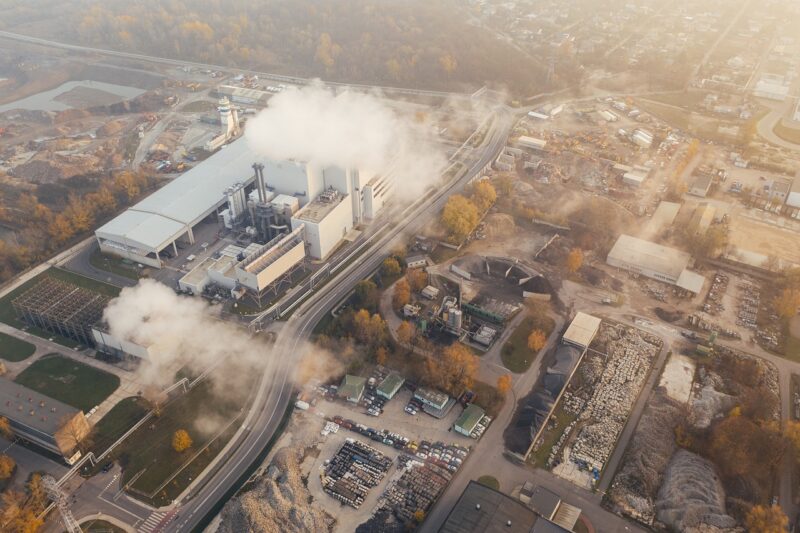Climate change is no longer just an environmental issue; it’s a business challenge and opportunity. The increasing awareness of global warming, alongside rising expectations from consumers and regulators, has put sustainability at the forefront of corporate priorities. For businesses, managing carbon emissions isn’t just about doing the right thing—it’s about ensuring long-term viability in a rapidly changing world.
Carbon management, the process of tracking, reducing, and offsetting greenhouse gas (GHG) emissions, is essential for businesses looking to align with global climate goals. It’s not just a buzzword; it’s a roadmap to balancing profitability with planetary health. From energy efficiency to carbon neutrality goals, companies of all sizes are transforming their operations to reduce their environmental impact.
In this article, we’ll dive deep into what carbon management means for businesses, why it matters, and how it can create a competitive advantage.
Table of Contents
Understanding Carbon Management
What is Carbon Management?
At its core, carbon management involves identifying, quantifying, and managing the greenhouse gas emissions a business generates. It’s a systematic approach to tackling climate change, blending science with strategy. The process includes three primary stages:
- Measurement: Quantifying emissions across all operations.
- Reduction: Identifying ways to lower emissions.
- Offsetting: Compensating for unavoidable emissions through initiatives like reforestation or renewable energy projects.
For businesses, carbon management isn’t a one-size-fits-all approach. Industries like manufacturing might focus heavily on reducing direct emissions, while tech companies might aim at lowering energy consumption from data centers. Regardless of the sector, the ultimate goal is to minimize a company’s carbon footprint.
Why is Carbon Management Important for Businesses?
Why should businesses care about carbon management? The answer lies in three key areas:
- Environmental Impact: Businesses are among the largest contributors to global GHG emissions. By reducing emissions, companies play a critical role in combating climate change.
- Regulatory Compliance: Governments worldwide are introducing stricter regulations around emissions. Companies failing to comply risk penalties, fines, or even operational restrictions.
- Reputation and Consumer Preference: Consumers today are more eco-conscious than ever. A company with a strong commitment to sustainability is more likely to attract loyal customers and top talent.
Ignoring carbon management isn’t just irresponsible—it’s a missed opportunity to align with a global movement that’s reshaping markets and industries.
The Role of Carbon Footprints in Carbon Management
The term “carbon footprint” refers to the total greenhouse gas emissions directly or indirectly caused by a business. Understanding this is the foundation of effective carbon management. Emissions are typically categorized into three scopes:
- Scope 1: Direct emissions from company-owned assets, such as vehicles and facilities.
- Scope 2: Indirect emissions from purchased electricity or heating.
- Scope 3: Emissions from the broader supply chain, including outsourced production and employee travel.
By analyzing their carbon footprint, businesses can identify the biggest contributors to their emissions and prioritize actions accordingly.
Benefits of Carbon Management for Businesses
Financial Benefits
Implementing carbon management strategies can lead to significant cost savings. For example:
- Energy Efficiency: Simple measures like upgrading to LED lighting or optimizing machinery can reduce energy bills.
- Access to Green Incentives: Governments and financial institutions are offering incentives like tax credits and grants to companies adopting sustainable practices.
Moreover, businesses that proactively address carbon emissions often find themselves better positioned to attract investment. Green funding is becoming a major focus for investors seeking environmentally responsible portfolios.
Competitive Edge
In today’s market, sustainability isn’t just a trend; it’s a defining factor. Companies that take bold steps toward carbon neutrality differentiate themselves from competitors. They appeal to a growing demographic of eco-conscious consumers who value ethical and sustainable practices.
For example, a retail brand that commits to zero-waste packaging and carbon-neutral shipping is more likely to win over customers than one that sticks to traditional methods.
Risk Mitigation
Carbon management is not just about creating opportunities; it’s also about minimizing risks. Businesses that fail to act may face several challenges:
- Regulatory Risks: As governments impose stricter emissions standards, companies not in compliance could face fines or restrictions on operations.
- Reputational Risks: In a world where customers value transparency, businesses ignoring sustainability may face backlash and lose market share.
- Operational Risks: Climate change itself poses risks to supply chains and operations. For instance, extreme weather events can disrupt logistics or damage infrastructure.
By adopting carbon management practices, businesses prepare themselves for future challenges and ensure resilience in a changing global landscape.
Key Strategies for Effective Carbon Management
Measuring Carbon Emissions
Before reducing emissions, businesses need to understand their baseline emissions. Accurate measurement is the first step toward an effective carbon management strategy. Here’s how companies can get started:
- Conduct Emission Audits: Regular audits help identify areas where emissions are highest.
- Use Digital Tools: Software like carbon calculators or specialized AI platforms can simplify tracking and provide real-time data.
- Engage Third Parties: Many organizations collaborate with environmental consultants to ensure accurate and unbiased assessments.
A detailed carbon inventory enables businesses to set achievable goals and measure progress effectively.
Reducing Carbon Emissions
Once emissions are measured, companies can explore ways to reduce them. Here are some common strategies:
- Invest in Renewable Energy: Transitioning to solar, wind, or hydropower reduces reliance on fossil fuels and lowers operational costs in the long run.
- Enhance Energy Efficiency: Upgrading machinery, using energy-efficient appliances, and optimizing production processes can significantly cut emissions.
- Adopt Circular Economy Practices: Reducing waste, reusing materials, and recycling help lower the carbon impact of products and services.
For instance, a manufacturing company can switch to cleaner production technologies, while service-oriented businesses can reduce emissions by allowing remote work and digitizing processes.
Carbon Offsetting
Not all emissions can be eliminated, but they can be offset. Carbon offsetting involves funding projects that reduce or capture carbon emissions elsewhere. Common examples include:
- Reforestation: Planting trees to absorb CO2.
- Renewable Energy Projects: Supporting wind or solar farms in underdeveloped regions.
- Methane Capture: Investing in technology that captures methane from landfills or agricultural operations.
While offsetting isn’t a substitute for reducing emissions, it’s a valuable tool for achieving net-zero goals.
Setting Carbon Neutral Goals
Achieving carbon neutrality is a growing ambition among businesses. Here’s a roadmap for setting realistic and impactful goals:
- Define the Scope: Identify which emissions (Scope 1, 2, and 3) will be addressed.
- Set a Timeline: Establish clear milestones and deadlines, such as achieving neutrality by 2030 or 2050.
- Engage Stakeholders: Involve employees, customers, and suppliers in the journey to ensure collective action.
For example, large corporations like Apple have committed to becoming carbon-neutral across their supply chains and products by a specific target year, inspiring others to follow suit.
Technologies Driving Carbon Management
Renewable Energy Technologies
Renewable energy is a cornerstone of carbon management. Technologies like solar panels, wind turbines, and hydropower systems allow businesses to generate clean energy onsite or purchase it through green power agreements. These solutions not only reduce emissions but also provide long-term cost benefits.
Some companies even go a step further by adopting cutting-edge solutions like bioenergy, which converts organic materials into usable energy.
Carbon Capture and Storage (CCS)
CCS technology is revolutionizing the way industries manage emissions. It involves capturing CO2 from industrial processes or power plants before it enters the atmosphere and storing it underground. Industries like cement, steel, and chemical manufacturing are particularly benefiting from CCS, as these sectors are traditionally hard to decarbonize.
While CCS is still in its early stages, its potential for widespread adoption is significant.
Digital Solutions for Monitoring Emissions
Technology is transforming carbon management. From AI-powered platforms to blockchain for tracking carbon credits, businesses have access to advanced tools that simplify sustainability efforts:
- Real-Time Monitoring: Software that tracks emissions across supply chains provides actionable insights.
- Automation: Automated systems can adjust operations for optimal energy use, reducing waste and emissions.
- Data-Driven Decision Making: Predictive analytics helps businesses plan for future reductions.
These tools not only streamline efforts but also make it easier to communicate progress to stakeholders.
Carbon Management and Regulations
Global Carbon Regulations
Governments worldwide are introducing frameworks to reduce emissions. Key agreements include:
- The Paris Agreement: A global pact aiming to limit global warming to below 2°C.
- Carbon Pricing: Carbon taxes and cap-and-trade systems incentivize businesses to lower emissions.
Complying with these regulations is non-negotiable for businesses operating on an international scale.
Industry-Specific Standards
Different sectors face unique challenges when it comes to carbon management. For example:
- Energy Sector: Focuses on transitioning to renewable sources.
- Transportation: Adopts electric and hydrogen-powered vehicles.
- Retail: Emphasizes sustainable packaging and logistics.
By understanding industry-specific standards, businesses can develop customized strategies to meet their goals.
Challenges in Carbon Management
Cost Barriers
One of the biggest challenges businesses face when implementing carbon management practices is the financial burden. Transitioning to sustainable operations often requires significant upfront investment in technology, infrastructure, and training. For example:
- Energy-Efficient Equipment: Upgrading to advanced machinery can be expensive initially, though it saves costs over time.
- Renewable Energy Systems: Solar panels, wind turbines, and other renewable energy setups demand substantial initial funding.
- Specialized Expertise: Hiring sustainability consultants or dedicating internal resources to carbon management adds to operational costs.
However, solutions like government subsidies, green loans, and public-private partnerships can help alleviate these costs. Additionally, the long-term savings from energy efficiency and lower regulatory penalties make these investments worthwhile.
Technological Limitations
While technological advancements have revolutionized carbon management, gaps remain. For example:
- Carbon Capture and Storage (CCS): Although promising, CCS technology is not yet scalable or affordable for all industries.
- Renewable Energy Integration: Transitioning entire grids to renewable energy still faces challenges like energy storage and intermittency.
- Monitoring and Reporting Tools: While software tools are available, smaller businesses often struggle to adopt them due to cost or complexity.
Overcoming these limitations requires continued investment in innovation and collaboration across industries to share best practices and breakthroughs.
Resistance to Change
Another significant hurdle is the organizational and cultural resistance to adopting carbon management. Many companies, particularly in traditional industries, are hesitant to overhaul their operations. Common reasons include:
- Fear of Disruption: Managers may worry about interrupting workflows or increasing costs.
- Lack of Awareness: Employees and stakeholders might not fully understand the benefits of carbon management.
- Short-Term Focus: Some businesses prioritize immediate profits over long-term sustainability goals.
To combat this, organizations need to prioritize education, foster a culture of sustainability, and highlight the tangible benefits of carbon management. Leaders who champion these efforts can inspire teams and drive change.
Case Studies of Successful Carbon Management
Examples from Large Corporations
Major companies worldwide are leading the charge in carbon management. For instance:
- Google: The tech giant achieved carbon neutrality in 2007 and continues to invest in renewable energy, aiming to operate entirely on carbon-free energy by 2030.
- Microsoft: Committed to becoming carbon-negative by 2030, the company is not only reducing emissions but also removing its historical emissions through innovative projects.
- Unilever: This multinational consumer goods company focuses on sustainable sourcing and renewable energy, with goals to cut emissions by 50% by 2030.
These examples show that large-scale efforts, when implemented effectively, can make a significant impact on global emissions.
Lessons from SMEs
Small and medium-sized enterprises (SMEs) may lack the resources of big corporations, but they’re finding creative ways to manage carbon. For example:
- Local Restaurants: Transitioning to locally sourced ingredients reduces transportation emissions.
- Boutique Retailers: Offering carbon-neutral shipping options and reducing packaging waste.
SMEs often benefit from flexibility and innovation, proving that even smaller players can make a meaningful difference.
Sector-Specific Success Stories
Different industries are adopting tailored approaches to carbon management. For instance:
- Renewable Energy Sector: Companies producing solar panels and wind turbines are reducing their own emissions by optimizing production processes.
- Automotive Industry: Firms like Tesla are driving the shift to electric vehicles, reducing emissions across the transportation sector.
- Retail Giants: Companies like IKEA are committing to using 100% renewable energy in operations and ensuring sustainable sourcing for all their products.
These sector-specific strategies provide blueprints for others to emulate.
The Future of Business and Carbon Management
Emerging Trends
The landscape of carbon management is constantly evolving. Key trends shaping the future include:
- Net-Zero Commitments: More companies are pledging to achieve net-zero emissions, driving innovation and accountability.
- Sustainable Supply Chains: Businesses are partnering with suppliers to ensure that their entire value chain aligns with carbon reduction goals.
- Circular Economy Models: A focus on reusing and recycling materials is replacing the traditional linear “take-make-dispose” model.
These trends indicate a shift from isolated initiatives to holistic strategies for sustainability.
Role of Stakeholders
The future of carbon management hinges on collaboration among various stakeholders:
- Governments: Setting regulations and offering incentives to encourage corporate responsibility.
- Businesses: Innovating and adopting best practices to reduce emissions.
- Consumers: Driving demand for sustainable products and holding companies accountable.
Together, these groups can accelerate progress toward a low-carbon economy.
Long-Term Implications
Carbon management isn’t just about the present; it’s about ensuring a sustainable future. Companies that invest in carbon management today will not only contribute to global climate goals but also secure their position in a rapidly evolving market. Those that fail to act risk falling behind as consumer preferences, regulations, and technologies continue to shift.
Conclusion
Carbon management is no longer optional for businesses—it’s a necessity. From reducing emissions to offsetting and achieving carbon neutrality, the steps companies take today will shape their future. Beyond environmental benefits, effective carbon management drives cost savings, enhances brand reputation, and mitigates risks.
The journey toward sustainability isn’t without its challenges, but the rewards far outweigh the obstacles. Businesses of all sizes have a role to play in combating climate change, and the time to act is now.
By integrating carbon management into their operations, companies can lead the charge toward a cleaner, greener future.
FAQs
How does carbon offsetting differ from carbon reduction?
Carbon reduction lowers emissions at their source, while offsetting compensates for unavoidable emissions by funding projects like reforestation.
What is the first step in implementing carbon management in a business?
The first step is measuring your carbon footprint through an emissions audit to identify where reductions are needed.
How can small businesses afford carbon management solutions?
Small businesses can start with cost-effective measures like energy efficiency and take advantage of government incentives for sustainability.
Are there certifications for businesses practicing effective carbon management?
Yes, certifications like ISO 14001 and PAS 2060 validate a company’s commitment to environmental management and carbon neutrality.
What role do consumers play in encouraging carbon management?
Consumers drive demand for sustainable practices by choosing eco-friendly brands and products.










